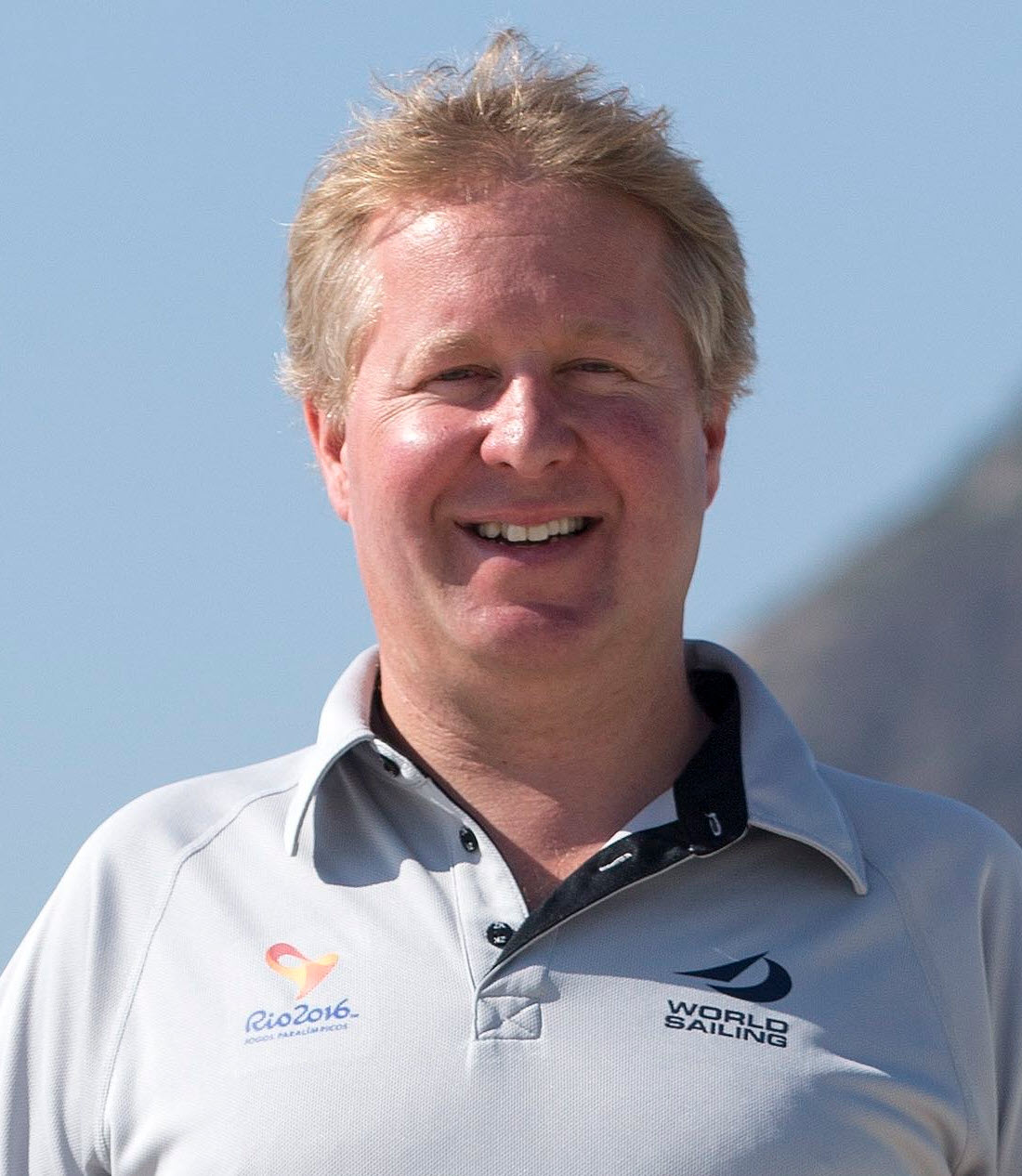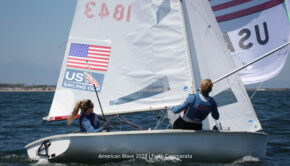Tokyo 2020: Preparing the venue
Published on January 12th, 2020

Alastair Fox
With just six months to go before the Tokyo 2020 Olympics, time is short as nations and their athletes prepare for the conditions on Sagami Bay. And while the host is responsible for preparing the venue, it is compulsory for each sporting federation to manage the process.
Alastair Fox is the Director of Events at World Sailing, and he is on point to insure the Enoshima venue will be ready. But with every Olympics comes challenges to overcome, so Scuttlebutt editor Craig Leweck checks in with Alastair for an update:
While Rio 2016 had pollution concerns, what have been the hurdles in Tokyo?
Originally the sailing venue was going to be in Tokyo Bay with the idea of building a brand-new venue, but when it was discovered it was underneath the Haneda Airport flight path, which made broadcast pretty tricky, and it was going to cost a fortune for them to build this marina, it was time for Plan B.
We looked at three different options in Japan, and clearly identified Enoshima as a standout venue. It had the link to the 1964 Olympics, which was great as a legacy element, but it was not without challenges to sort out.
Primarily, we had negotiate the field of play with the fishermen’s union. I think, effectively, it’s the same fishing families who were there in ’64, who presumably did some sort of deal with the organizing committee, and now it’s the grandsons having their turn to do a deal with the Olympic Committee.
Initially we had problems in our first unofficial test event in 2018, where we wanted to start racing on certain racing areas at a certain time and the fishermen’s union didn’t agree, and so there was some tension. But we are in a good place right now.
We had a summer of sailing there in 2019 with the 470 Worlds, an official test event, and a World Cup regatta. There’s a good understanding of the various course areas and when we will be using them so the fishermen stay away. It worked really well, so we’re hoping, obviously, that will continue for 2020.
It must be said how important fishing is as an industry in Japan.
Indeed, the demand for fresh fish is huge, and so the specific problem in Sagami Bay, where our racing areas are, is that they have deep fishing nets that are effectively storage facilities for fish. And yes, they’re also fishing as well, and they have a lot of lobster pots and things like that out, and we’re basically saying, “Clear the field of play.”
But what we’ve actually done as part of the negotiations with the fishermen’s union is that we’ve located some of our racing areas so that some of the big fixed fishing nets can stay there. That’s been a win for the fishing fleet, and it isn’t too much of an issue for us, as long as we have a clean set of racing areas when we need them.
With pollution having been such an issue at Rio, it is being reported how some events being held within Tokyo Bay are finding unhealthy conditions.
If we had remained in Tokyo Bay, we would have the same pollution concerns; maybe not to the quite same level as Rio, but they would be there. The triathlon had their test event at the same time we had our test event, and they had to run a biathlon because their rules basically said they weren’t going to go swimming.
So we’re very happy to be in Enoshima, but not only from a water-quality point of view, but from a sailing condition point of view. Enoshima has everything. You can have light, shifty northerly winds and then big sea breezes and big waves, and I think the sailors love being there. Tokyo Bay would have been a flat-water regatta, so for lots of reasons, we’re very, very happy being in Enoshima.

Sailing venue island.
The Enoshima layout look phenomenal.
The whole marina (see top photo) was built for the ’64 games so everything was basically there but they’ve built a new sailing center that’s a great legacy building. However, there will be a need for temporary structures to facilitate all the race administration, measurement, broadcast, etc which does cause a bit of a problem for us because the frequency of typhoons.
They obviously are always building and designing anything in case there’s a tsunami, but there are still some challenges with relying on a temporary infrastructure because, if the worst was to happen weather-wise, you can’t necessarily use them. But most of the facilities are there and working well.
As natural disasters are frequent, let’s talk about the evacuation training.
Every decision that’s made around our venue, and I’m sure it’s the same in all the other sports, factors in the impact of a typhoon, tsunami, and earthquake. Our race information will deal with it too while the athletes are on the water.
For example, if a tsunami were to hit while we were racing, we don’t want people coming back to shore. We want them to go offshore, and there’s effectively a safety meeting point there.
In terms of what happens on shore, we will publish very clear safety guidelines for where athletes need to go if there’s a tsunami which directs how everyone has to get over 13 meters within 10 minutes. This is something the Japanese do all the time in terms of training and making sure people understand it. So I think, from a tsunami point of view, we can mitigate the risks as best we can.
Also, the number of people on Enoshima Island at any one time is being very carefully controlled. We wanted to have thousands more spectators, but with the consequence of tsunami and typhoon planning, that number had to be reduced.
The road off the island looks narrow.
It’s a very narrow road. And the bottom line is, if there’s a tsunami, you don’t try and get off the island. You go up the hill on the island. That’s the evacuation plan.
THIS IS PART ONE OF A THREE PART SERIES.









 We’ll keep your information safe.
We’ll keep your information safe.